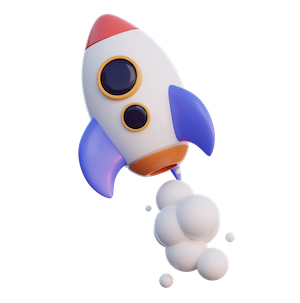The most popular confusion for people looking to enter the product world is the difference between these three key roles in any organization. These roles are often misinterpreted, leading to confusion and inefficiencies in organizations and careers.
Note: While the ideal definitions of the roles are explained in this blog, please note that many companies have very loose definitions of the roles. So the expert advice is to understand the role clearly from your managers, job descriptions and talking to relevant people in the organization, to make sure you are clear about the responsibilities.
After this post, you’ll have clarity about what product managers, product owners, and project managers do and how they are differentiated in any organization.
To start with, a product manager is a strategic thinker responsible for the overall success of a product or product line throughout its lifecycle. Their primary focus is on the product vision, and strategy, and aligning it with the company’s goals and customer needs. Some key responsibilities of a Product Manager include:
a. Defining the Product Vision: The Product Manager sets the long-term vision and goals for the product, ensuring that it aligns with the company’s overall strategy.
b. Market Analysis and Customer Research: PMs conduct in-depth market research and gather customer feedback to identify opportunities and pain points to create a product that meets customer needs.
c. Roadmap Development: They create a product roadmap outlining the product’s development plan, prioritizing features and improvements based on customer demands and market trends.
d. Cross-Functional Collaboration: Product Managers work closely with various teams, including engineering, design, marketing, and sales, to ensure the product’s successful development and launch.
e. Metrics and Success Measurement: PMs define key performance indicators (KPIs) to measure the product’s success and make data-driven decisions for continuous improvement.
On the other hand, the Product Owner (PO) is a role within the Agile framework, particularly in Scrum, responsible for managing the product backlog and ensuring the development team delivers the most valuable product increments.
While the Product Owner might sound similar to the Product Manager, they have a narrower focus and work closely with the development team. Key responsibilities of a Product Owner include:
a. Managing the Product Backlog: POs maintain a prioritized list of features, user stories, and tasks in the product backlog, ensuring it remains up-to-date and aligned with business goals.
b. Collaboration with the Development Team: They work closely with the development team to clarify requirements, provide feedback, and make decisions during the sprint planning and review meetings.
c. User Stories Definition: POs create and refine user stories, ensuring they are well-defined, actionable, and easy for the development team to understand.
d. Iterative Planning and Delivery: Product Owners participate in sprint planning and review meetings, ensuring that the development team is delivering valuable increments in each iteration.
e. Stakeholder Communication: They facilitate communication with stakeholders, keeping them informed about the product’s progress and involving them in the decision-making process when necessary.
In the end, we have the Project Manager (PM) who is responsible for the successful planning, execution, and delivery of a specific project within the organization.
Project Managers focus on coordinating resources, managing timelines, and ensuring the project’s objectives are met.
Key responsibilities of a Project Manager include:
a. Project & Resource Planning: PMs define the project scope, objectives, and deliverables, creating a detailed project plan that outlines the tasks, timelines, and resource allocation.
b. Risk Management: PMs identify potential risks and create contingency plans to address them, mitigating any adverse impact on the project’s success.
c. Progress Tracking: They monitor project progress, track milestones, and provide regular status updates to stakeholders, keeping them informed about the project’s health.
Conclusion
In conclusion, the roles of Product Manager, Product Owner, and Project Manager are distinct and complementary within the realm of product development and project management.
While the Product Manager focuses on the strategic direction of the product and aligns it with the company’s goals, the Product Owner works closely with the development team, managing the product backlog and ensuring successful iterative delivery. On the other hand, the Project Manager concentrates on the successful planning, execution, and delivery of a specific project.
Properly defining and differentiating these roles will contribute to a more efficient, collaborative, and productive work environment, ultimately benefiting both the organization and its customers.
 WATCH HELLOPM COHORT IN ACTION
WATCH HELLOPM COHORT IN ACTION


